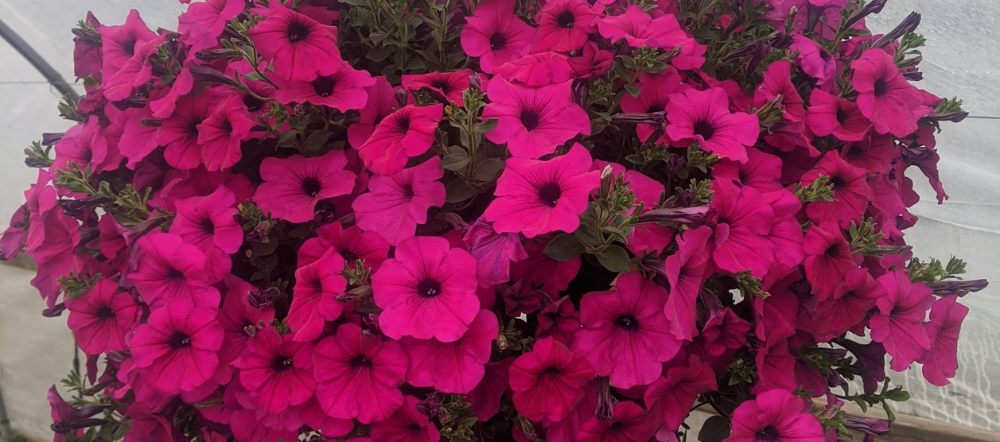Wave petunias took the gardening world by force when they were introduced in 1995. These plants’ vigorous blooming, spreading, and ease of care has made them a favorite for many growers in the United States.
In Pennsylvania, Wave petunias have multiple months of a growing season and typically perform relatively well with the summer heat.
Before we get into information on growing your own Wave petunias, here’s an answer to a question we get asked a lot.
What’s the difference between Wave petunias and regular petunias?
Wave petunias are trailers and spreaders, often growing long vines that drape over pots or act as a ground cover in landscape.
Regular petunias, on the other hand, are more compact (making them great for pots, planters, or even as an addition to a garden). While regular petunias may spread a little, it’s more known for their small, upright, and bushy growth.
While Wave petunias are not as hardy as Supertunias, spreading petunias also are considered superior compared to regular petunias when it comes to their harsh weather resistance (although a heavy frost or freezing temperatures can still wipe them out) and longer bloom times (with more blooms at a time).
There are other differences between these two plants, but the biggest you will notice is the growing habits of each of them.
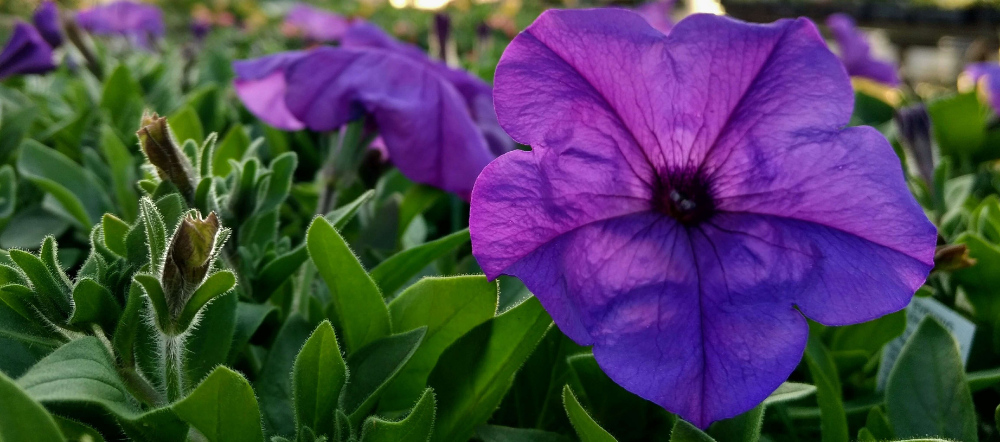
Growing Wave petunias
So you want to plant and grow your own Wave petunias — where do you start? Here’s a quick guide to some of the basics of growing spreading petunias.
Spacing
To start, you’ll want to plant spreading petunias about 1 to 2 feet apart from each other and other plants.
Some varieties, such as Tidal Wave petunias will mound up and may need more space between the plants. Growers often like the look of Wave petunias when they are growing into each other, but make sure you are giving them at least some space so the plants can stay healthy.
If you are planting your Wave petunias in hanging baskets or pots, Wave petunias will generally fill in the space you give them. Be careful not to overcrowd your container, as these annuals will fill up a surprising amount of space.
Sunlight requirements
Wave petunias love the sun! Given at least partial direct sun (at least 6 hours is preferred), these plants will bloom more vibrantly and will be more likely to produce new growth.
Temperature needs
Wave petunias thrive in growing zones 9 and 10, but they can be grown throughout the United States. In PA growing zones (where we’re located), Wave petunias grow great outside from late April into October, if properly cared for.
A hardy plant may be able to withstand freezing temperatures, but it’s preferable to take your plants inside overnight or cover them if you are expecting a hard frost in early spring.
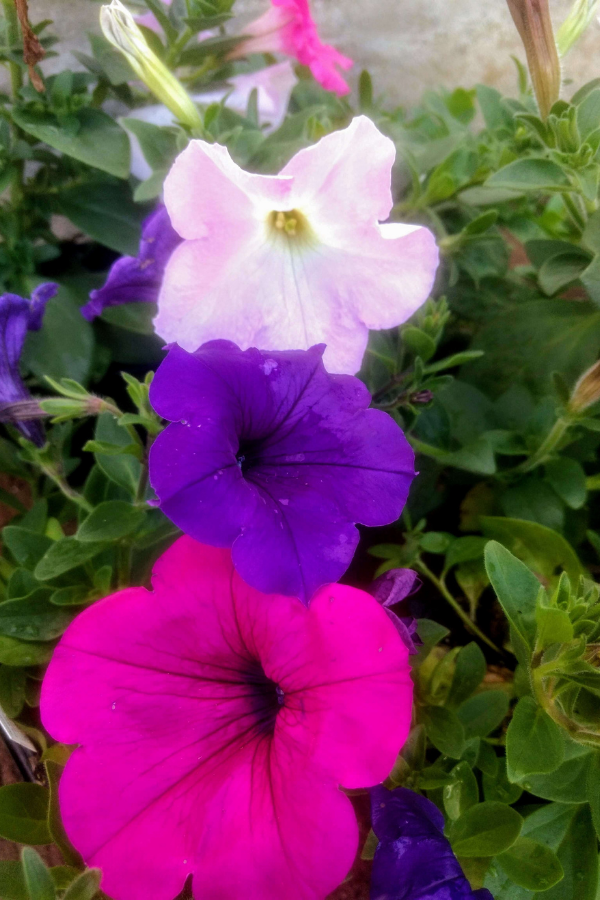
Soil type
Like most annuals, Wave petunias prefer soil that is well-drained. Soil that holds too much water, whether in a container or in the landscape, may increase the likelihood of diseases, such as root rot.
Fertilizer needs
Wave petunias will certainly appreciate organic fertilizer in your soil from leaves, mulch, added nutrients, or compost. If your soil is built up, you can use slow-release fertilizer or liquid fertilizer to provide the plant with the nutrients it needs throughout the summer.
Typically, fertilizing these plants every 3 waterings is a good idea — this helps the plant get additional resources during the hot seasons when you are watering more frequently. Of course, you’ll always want to use your discretion when determining when to fertilize your Wave petunia.
If the plant is losing a lot of its flowers or the foliage is becoming yellow, especially towards the center of the plant, this is a sign that the plant may need some fertilizer.
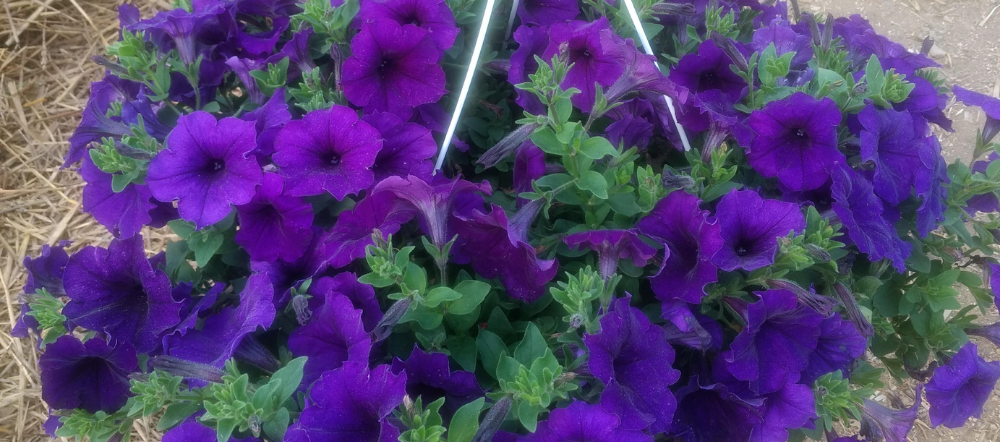
Deadheading
Unlike regular petunias, Wave petunias do not deadhead as much. This means that a harsh rain or storm won’t force you to pluck spent blooms off the plant.
One of the reasons that spreading petunias do not need to be deadheaded as much is due to their vibrant growth. If a Wave petunia is cared for properly it’ll continue to bloom throughout the summer, often replacing previously spent blooms.
Even if you don’t need to deadhead as much, making sure to cut back your plant occasionally can help promote better growth and makes for a healthier plant.
Disease and pest control
Spreading petunias can be hit with a bunch of diseases and pests, including:
- Viruses
- Fungal diseases
- Budworms
There are sprays that can be used to kill pests, such as budworms, like Thurocide — this spray is great for killing harmful bugs, but won’t hurt bees or other good bugs.
Growing Wave petunias in hanging baskets
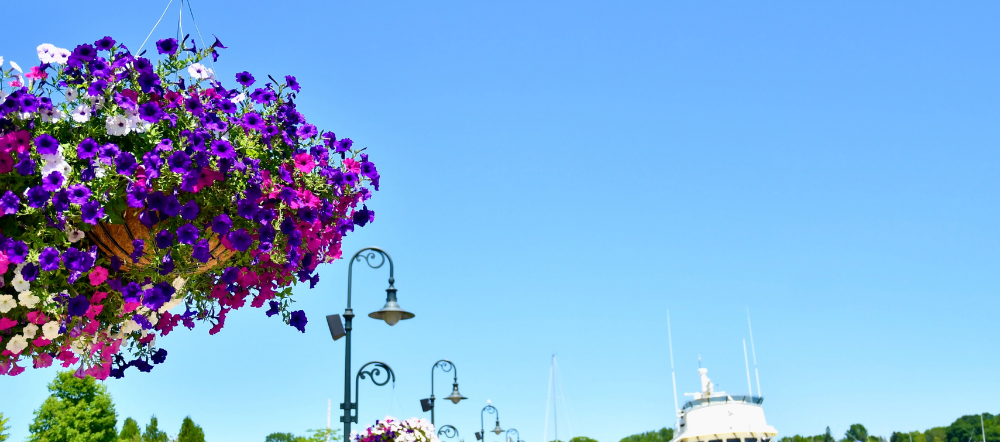
Spreading petunias grow great in hanging baskets! Their spreading vines will draper over the side of your basket, creating a stunning look.
Depending on the variety of spreading petunia and hanging basket size you’ll want to plant anywhere from 1 to 3 plants for your hanging basket.
If you are planting your spreading petunias with other plants in a hanging basket, make sure you don’t fill the container too full. Spreading can overtake other plants if too crowded, so you’ll want to make sure to give each plant a good head start!
Growing Wave petunias in landscape
Wave petunias are a favorite ground cover as they often spread 3-4 feet wide and bloom profusely. It may be advisable to cut back your Wave petunias in the landscape to ensure it doesn’t get too straggly.
Growing Wave petunias in containers
Just like growing them in hanging baskets, you’ll want to be careful about how many plants you are planting in your containers. Again, if you are looking for an exact number, it’s going to range according to how large your container is.
Plan on the Wave petunia growing a few feet long and mounding some, and plant other plants around it with this in mind.
Frequently ask questions
Here are some answers to some common questions we’ve heard about spreading petunias.
Do spreading petunias need deadheading?
For the most part, no! Spreading petunias are very easy-care and won’t require deadheading. Cutting back your Wave petunias throughout the summer will make the plant more healthy and will promote new growth!
Do they come back every year?
No, Wave petunias are annuals, at least for most of the United States, so they will grow for only one growing season. Even so, these plants will grow to an impressive size and can create stunning displays throughout the summer.
How long do they last?
Typically, Wave petunias will last well into the Fall. This depends if they are hit by a disease, were cared for during the heat of the summer, and how early it gets cold in your area.
Conclusion
Wave petunias are a great plant choice for a sunny landscape, pot, or hanging basket. Their vigorous growth and ease of care make them popular plants for gardeners to grow every year.

